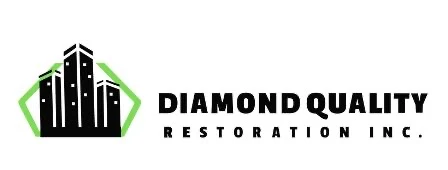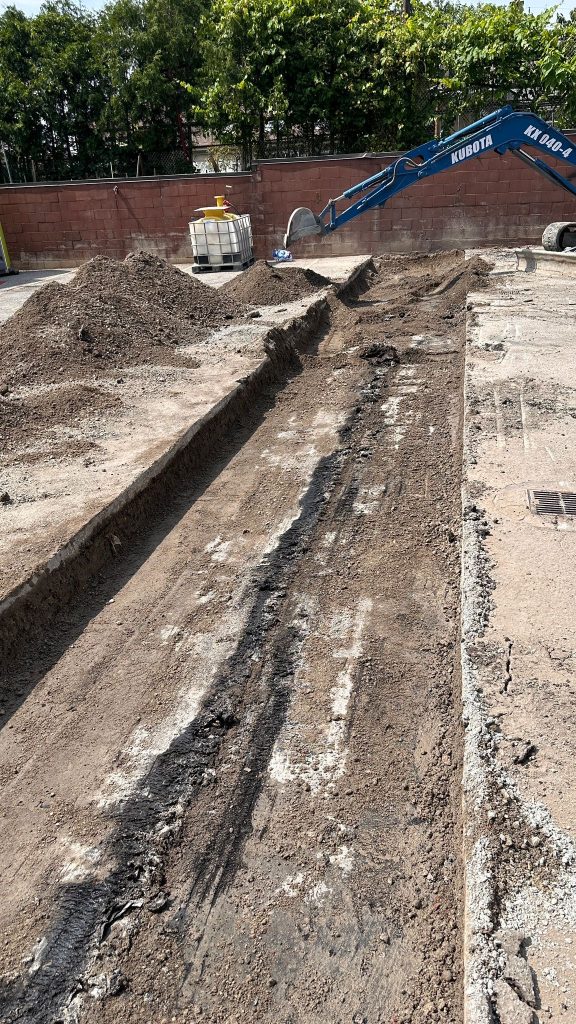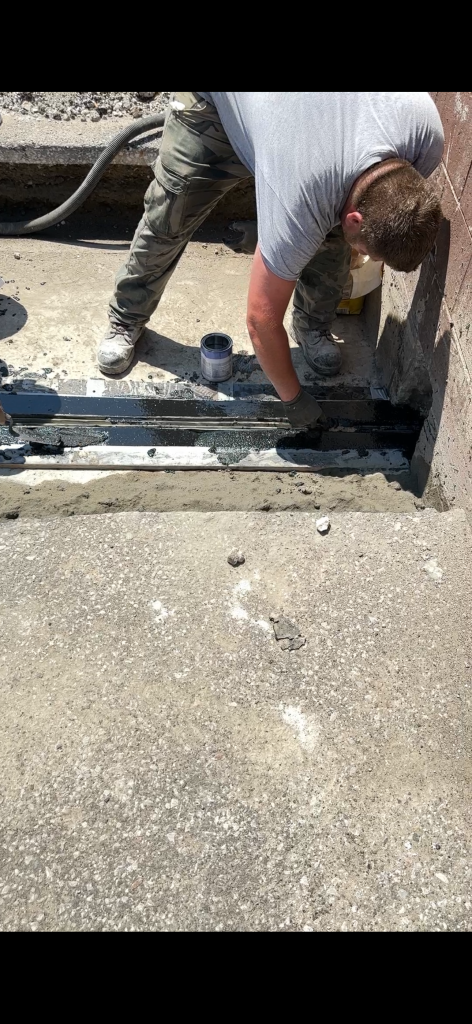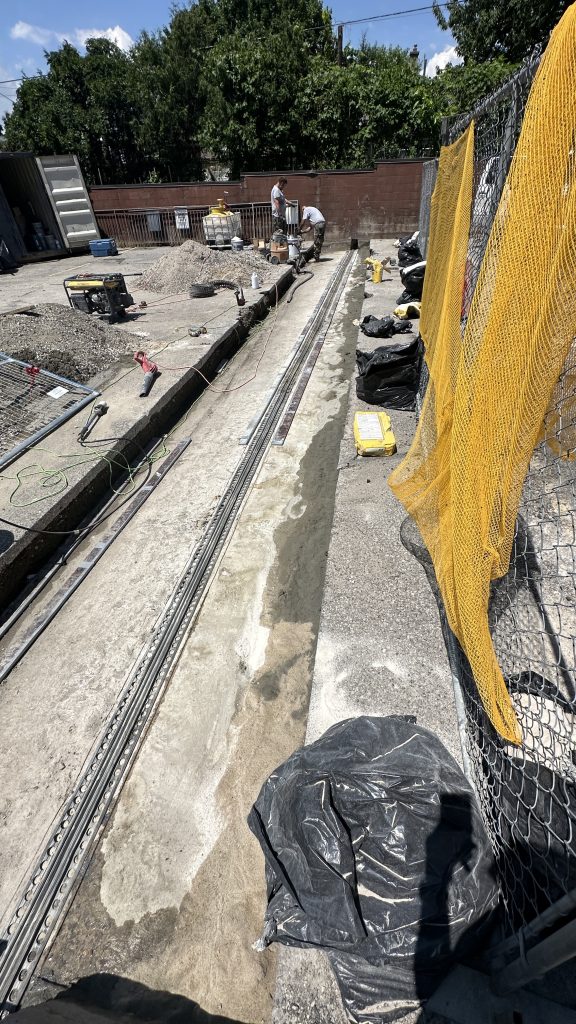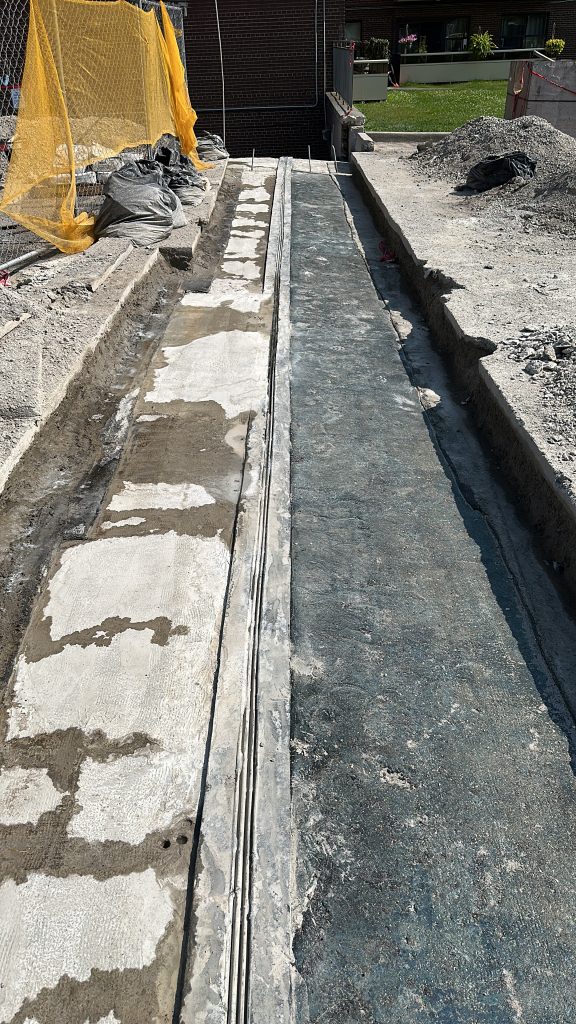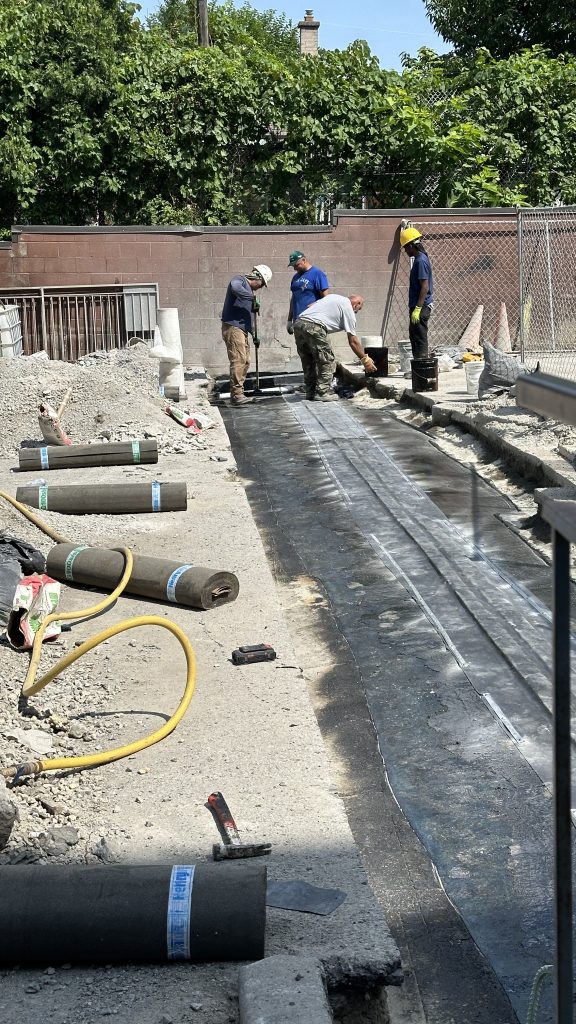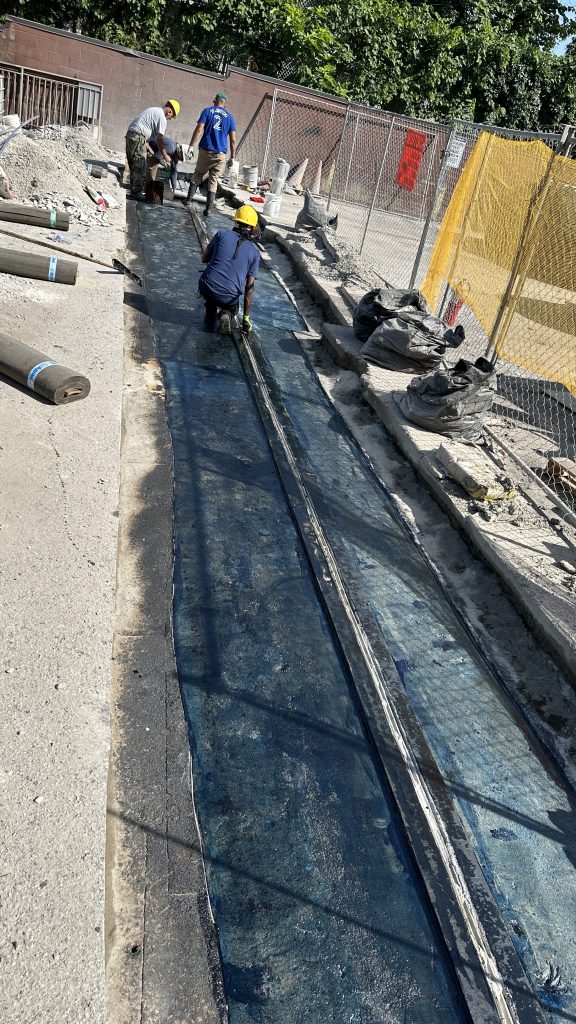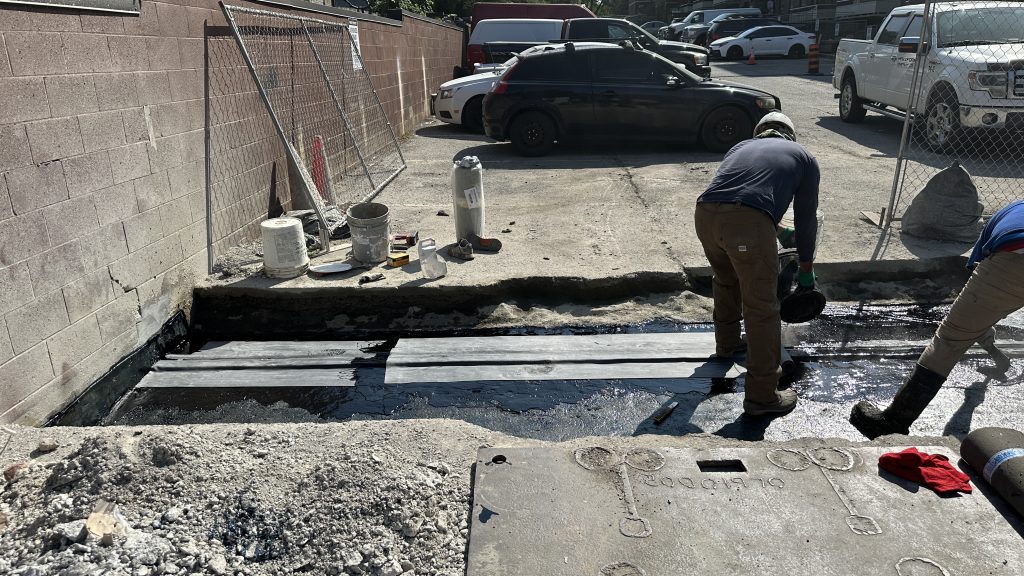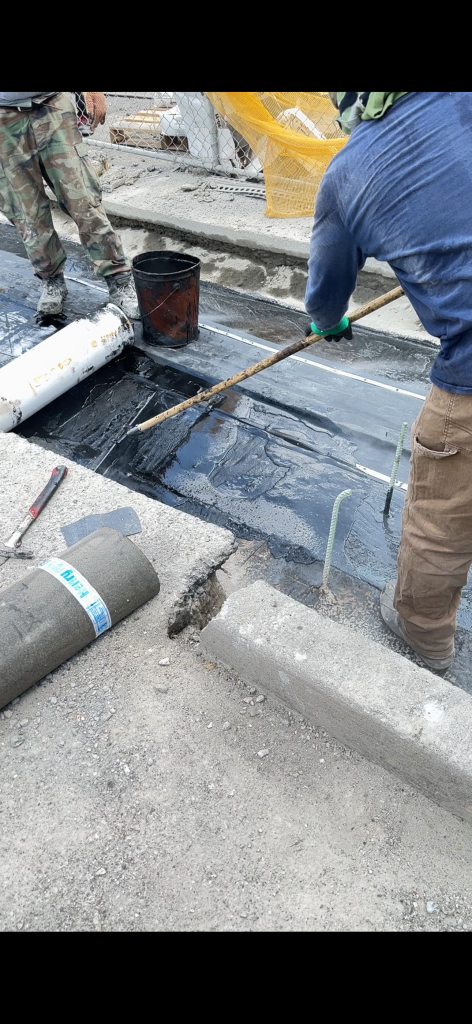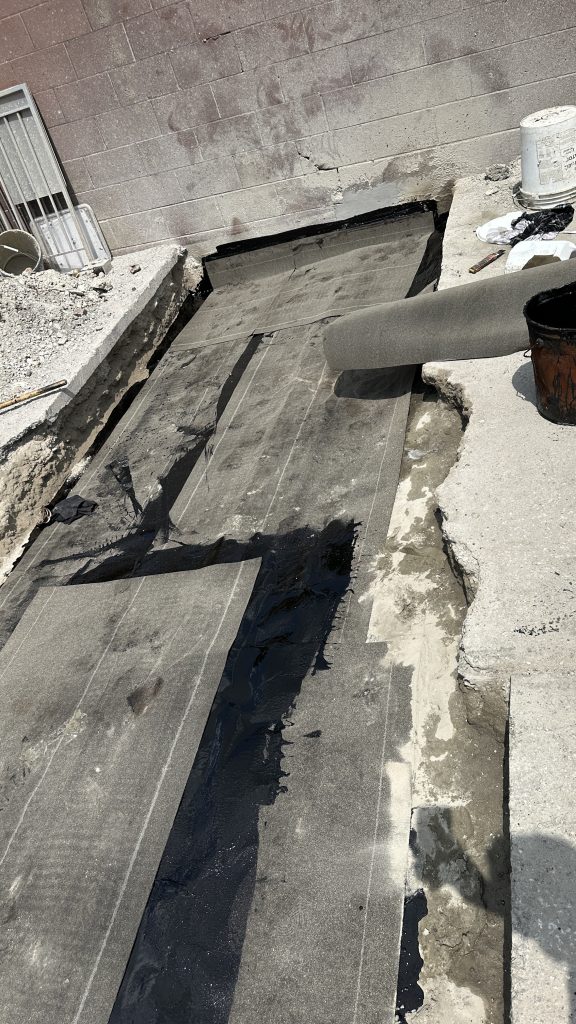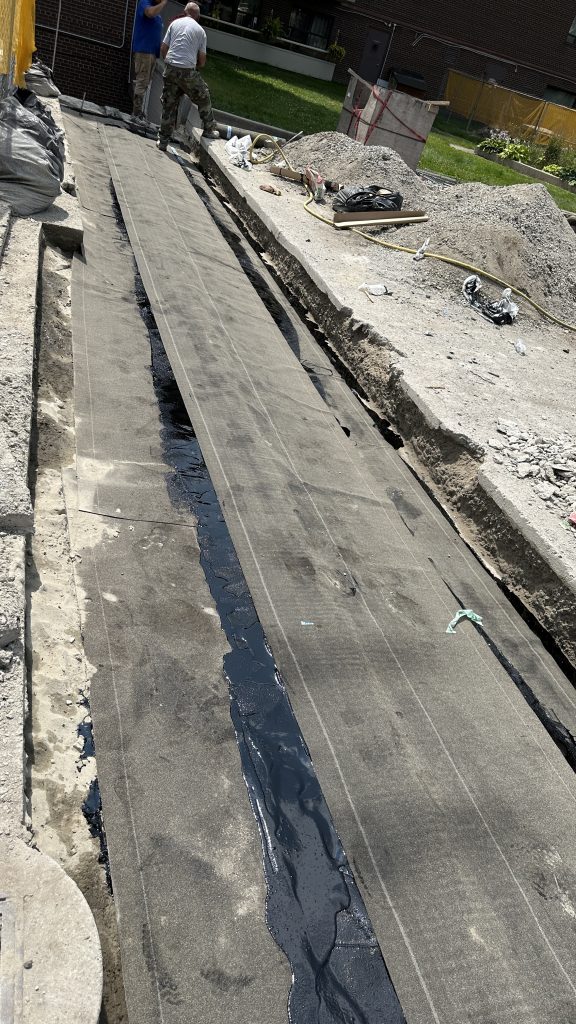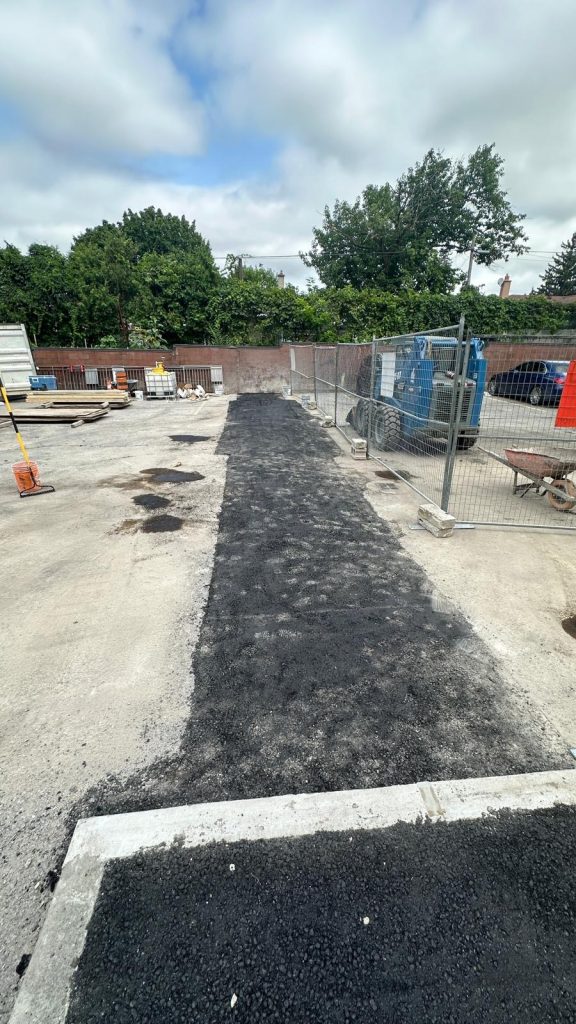Saw Cutting
Marking the Area: Clearly mark the dimensions of the expansion joint (6 ft wide by 60 ft long) on the existing surface to guide the cutting process.
Cutting Process: Use a concrete saw to precisely cut along the marked lines, ensuring clean edges to facilitate the removal of the joint material.
Excavation
Soil and Granular Removal: Carefully excavate the area within the saw-cut lines, removing all soil and granular materials. Use a mini-excavator or hand tools as necessary to prevent damage to surrounding structures.
Debris Management: Collect and dispose of all excavated materials according to local regulations, ensuring a clean work site.
Removal of Old Hot Rubber Waterproofing
Inspection: Assess the existing hot rubber waterproofing for signs of damage or wear.
Material Removal: Cut and peel away the old hot rubber waterproofing material from the concrete surface, ensuring that all remnants are completely removed.
Preparation of Concrete Surface
Cleaning: Thoroughly clean the exposed concrete surface using a wire brush and high-pressure water to remove any dirt, debris, or loose materials.
Surface Repair: Inspect the concrete for any cracks or defects. Repair as necessary to ensure a smooth, stable surface for the new materials.
Installation of New WaboCrete
Material Procurement: Obtain the new WaboCrete expansion joint material designed for durability and compatibility with existing surfaces.
Installation: Position the new WaboCrete joint into the prepared expansion joint area, ensuring it fits snugly against the concrete.
Application of New Hot Rubber Waterproofing
Preparation: Heat the new hot rubber waterproofing material according to manufacturer specifications.
Application: Apply the hot rubber waterproofing evenly over the installed WaboCrete, ensuring full coverage and a proper seal against moisture.
Reinstatement of Granular Base
Granular Material Supply: Source new granular material suitable for use as a base around the expansion joint.
Installation: Fill the excavated area with the new granular material, ensuring it is evenly distributed.
Compaction: Compact the granular base thoroughly using a mechanical compactor to ensure stability and prevent future settling.
Supply and Install New Asphalt
Asphalt Procurement: Source asphalt that matches the existing surface in composition and appearance.
Application Process: Heat the asphalt to the appropriate temperature. Spread the new asphalt over the reinstated granular base, ensuring an even and smooth finish. Compact the asphalt using a roller to achieve the desired density and to ensure it aligns with the surrounding surface.
